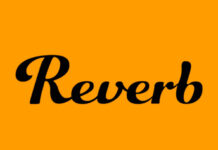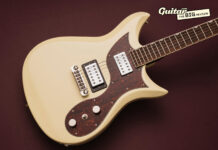
Monkey Riot Pedals Rippletron review: a gorgeous blend of phase, vibrato and tremolo
Welcome to another review within our series that’s looking at the lineup from NotPedals.com – a unique marketplace for small-run, handmade boutique pedals. Today we’re checking out the Rippletron from Monkey Riot FX.
READ MORE: Meet NotPedals.com, a marketplace that’s making boutique handmade pedals more accessible than ever
What is the Rippletron?
Let’s start on the outside of this thing – first things first, the screen printing is great – sharply-done, and with a Great Wave-esque design that evokes dark, swirling waters. A classic tack, if you’re a modulation pedal. Internally, things are all present and correct – this is an old-school through-hole board, and is very neatly done indeed.
The Rippletron is inspired by DOD Vibrothang, a unique combo of phase, vibrato and tremolo. There’s one master LFO speed control, as well as a depth, wave and filter control – these all tweak the intensity of the vibrato, tremolo and phase aspects of the effect respectively.
Monkey Riot Pedals Rippletron. Image: Press
In Use
Turning the Rippletron on (with a satisfying clunk – this is an old-school hardwired true-bypass switch, not a soft-switching relay), I immediately warm to it. With all knobs at noon the effect is surprisingly subtle – given the mutli-modulation nature of the effect, I’m half expecting it to be a crazy, swooshing signal destroyer – but it’s instead extremely musical and restrained.
Let’s go through the controls one-by-one. Speed is, as you’d expect, simply the speed of the LFO – ranging from helicopter-landing flutter to languishing sweeps. The speed is tied to a pulsing red LED – always a welcome addition on LFO controls, as it gives you an immediate visual cue of the sort of speed you should expect from a given setting.
Depth is tied to the intensity of both the pitch and the volume modulation. It goes from barely noticeable to a decent amount of wobble, however it’s worth noting that due to how the pitch vibrato is achieved, there’s not a massive amount of actual seasick pitching up and down here. Wave, on the other hand, adjusts the severity of the tremolo’s shape – at full, it’s a lot more of a choppy and aggressive, while on minimum, the amplitude modulation is basically removed from the equation. Combined with the relatively subtle pitch modulation, the wave control lets you dial in sounds quite reminiscent of a rotary speaker effect.
Filter adds a resonant, phasing aspect to the modulation. It’s again very subtle, but at maximum settings it adds a very pleasing tilt to the EQ as the LFO cycles.
After finding out what the extremities of all of these controls are, however, I actually find myself returning to noon for all of the controls. The Rippletron’s voice is best suited for a subtler approach, adding just the right amount of dynamic movement into an otherwise flat sound. You could only really achieve a similar sound by chaining together several other pedals, set even more subtly. But here we have a single pedal that can add a lot of interest to an otherwise flat tone – from fuzzy heaviness to sparkly, wobbling cleans – without totally overtaking your playing.
Overall the Rippletron is a very cool modernisation of a vintage DOD circuit. Relatedly, it’s worth noting that while the original Vibrothang is relatively attainable second-hand, it’s also housed within the rather bland-looking vintage DOD enclosure, which isn’t massively inspiring to look at, and has a reputation for being not the most mechanically reliable thing in the world. The Rippletron, then, becomes a great modern boutique alternative.
The post Monkey Riot Pedals Rippletron review: a gorgeous blend of phase, vibrato and tremolo appeared first on Guitar.com | All Things Guitar.
Source: www.guitar-bass.net












